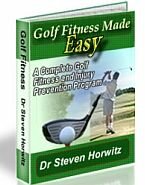SNOW REMOVAL SAFETY TIPS
- Don't shovel if you have had serious spinal, lung, or cardiovascular problems, or are out of shape.
- Drink 8 oz of water or Gatorade type drink before you shovel. It may be cold, but you will get dehydrated after shoveling if you are not careful.
- Warm up first! Do this warm-up before you shovel - it is all of 6 minutes!
- Dress warmly in layers, and wear an extra-long sweater to protect the lower back.
- You may want to wear a support or weight belt.
- Always stand erect and bend from the hips and knees, not the waist (mini squat). Handle small to moderate loads of snow. You may want to try one of the bent handle shovels like the one below.

- Keep your abdomen and buttocks tight as you lift or push the snow with your shovel. Read more on how to perform an abdominal brace
- Whenever possible, push rather than lift the snow. Deposit it nearby rather than trying to throw it over a wide area.
- Use the arms, legs, feet, and thighs in a coordinated effort.
- Stop if you feel pain, get dizzy or out of breath.
- Do the warm-up exercises again as a cool-down.
- Drink at least another 8 oz of water or Gatorade drink after you shovel and then eat, plenty of protein to help your muscles recover! Make sure you sip water the rest of the day to fully rehydrate.
- ICE your back (or any other problem areas) for 15 minutes after you finish shoveling. Do this even if you do not have any pain! You will avoid the next day soreness typical after shoveling. You can do this while you eat.
- If you have The Stick or a foam roller - get it out and use it. They are great for a cool down too. Warm-up again tomorrow. See our videos on our You Tube Channel.
- Take an Epsom salts bath before bed. One cup per 60 lbs of bodyweight. Soak for 15 minutes. The magnesium is wonderful for muscle recovery.
If you've "just pulled a muscle" remember that this tissue is torn and is never the same. The "healing" is really the formation of a different type of collagen tissue that needs to be treated with ART or Graston and then strengthened as it is weaker and more fibrous than the original tissue. A little damage control now will prevent a big problem later.
Let us know how you do! 301-622-9000. Forward this to friends and family so they do not get hurt!
Even Better....Get the Wovel! A snow shovel on wheels! Click Here!
| The Ultimate Nutritional Lie Detector Test LEARN MORE  |
Kettlebell Rehab

Click Here
To See How Kettlebells will transform your body!
Vortex Rehab

Click Here
To See How This
Revolutionary Machine
Can Help You!


















